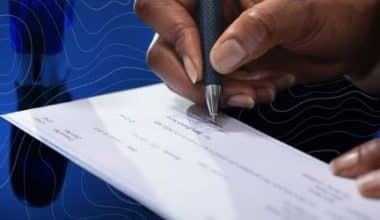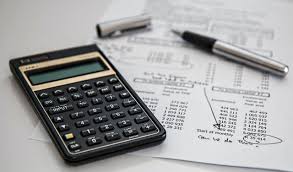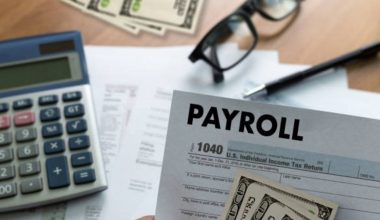A trial balance is a method that accountants use to ensure that the general accounting ledger is correct and to reduce errors in a company’s financial reporting. These internal financial reports can assist in verifying the correctness of a double-entry accounting system and identifying problems before any crucial external financial statements are produced.
While a trial balance cannot guarantee that no errors exist anywhere in a company’s accounting system, it can point to inaccuracies and assist in identifying and correcting problems in general ledger accounts.
What Is a Trial Balance?
A trial balance is an accounting worksheet in which the balances of all ledgers are combined into equal debit and credit account column totals. A trial balance is prepared on a regular basis, typically at the end of each reporting period. The general goal of creating a trial balance is to check that the entries in a company’s bookkeeping system are mathematically correct.
A trial balance is so named because it tests a key component of a set of books but is not a comprehensive audit of them. A trial balance is frequently the first step in an audit method since it helps auditors ensure that there are no mathematical problems in the bookkeeping system before going on to more intricate and extensive investigations.
How a Trial Balance Works
Preparing a trial balance for a corporation aids in detecting any mathematical errors that have occurred in the double-entry accounting system. If the total debits equal the total credits, the trial balance is declared balanced, and there should be no mathematical errors in the ledgers. However, this does not imply that there are no faults in a company’s accounting system. Transactions categorised incorrectly or simply absent from the system, for example, could nevertheless be major accounting errors that the trial balance technique would not detect.
What Does A Trial Balance Include?
A trial balance document lists all of the accounts from the general ledger in two columns: debits and credits. A trial balance normally contains five components:
- Credits and debits to each account from transactions throughout the accounting period
- The linked account names
- Account numbers
- Accounting period dates
- The total of all debit and credit balances
Trial Balance Requirements
Companies initially record their commercial transactions in bookkeeping accounts within the general ledger. Accounts in the ledgers may have been debited or credited during a specific accounting period before being included in a trial balance worksheet, depending on the types of business transactions that happened. Furthermore, some accounts may have been utilized to record several company transactions. As a result, the finishing balance of each ledger account, as represented in the trial balance worksheet, is the aggregate of all debits and credits submitted to that account based on all connected business activities.
A company’s transactions are recorded in a general ledger and eventually totaled to form a trial balance.
At the end of an accounting period, the accounts of asset, expense, or loss should have a debit balance, while the accounts of liability, equity, income, or gain should have a credit balance. However, certain accounts of the former type may have been credited and certain accounts of the latter type may have been debited during the accounting period when related business transactions reduced their respective accounts’ debit and credit balances, having the opposite effect on those accounts’ ending debit or credit balances. On a trial balance worksheet, all of the debit balances are in the left column, and all of the credit balances are in the right column, with the account titles to the far left of the two columns.
Types Of Trial Balance
There are three types of trial balance:
- The unadjusted trial balance
- The adjusted trial balance
- The post-closing trial balance
All three of these categories have the same format but slightly distinct uses. Before correcting journal entries is completed, the unadjusted trial balance is prepared on the fly. It is a record of daily transactions that can be used to balance a ledger by altering entries.
Once a book has been balanced, an adjusted trial balance can be completed. This trial balance contains the final balances for all accounts and is used to compile the financial statements. The post-closing trial balance displays the balances after the closing entries have been completed. This is your starting trial balance for the coming year.
When Should A Company Use A Trial Balance?
Modern accounting software automatically compares credit and debit balances, rendering trial balances redundant. However, some organizations generate trial balances as an internal review before producing formal financial statements. Trial balances can assist an accounting team in generating a balance sheet. Thus, ensuring the correctness of their double-entry accounting methods, and identifying any problems in their accounting, such as transactions put in the wrong account.
Business owners may also choose to compile a trial balance in the middle of a typical reporting period to examine their financial status and ensure that accounting processes are on track.
How Do You Create a Trial Balance?
You will need the closing balances of the general ledger accounts to produce a trial balance. The trial balance is created after recording all financial transactions in the journals and summarizing them on the ledger statements. The trial balance is used to confirm that the debits in the chart of accounts equal the credits.
Before beginning the trial balance, ensure that all ledger accounts are balanced. The difference between the total of all debit entries and the total of all credit entries is what determines the balance.
Make an eight-column worksheet. Column headings should provide the account number, account name, and the appropriate columns for debit and credit balances.
Transfer the account number, account name, and account balance to the trial balance worksheet for each ledger account in the corresponding debit or credit column.
Add the amounts in the debit and credit columns. An error-free trial balance should have the same totals. When the totals are the same, you can close the trial balance.
If there is a discrepancy, accountants must identify and correct the inaccuracies.
Here are some examples of trial balance mistakes:
- Entries have been made twice
- Omission of entries
- Entries have been made to the wrong account
- Transposition error
- A mistake in transferring the balances to the trial balance
- Error in balancing an account
- The wrong amount is posted in the ledger
- Made the entry in the wrong column, debit instead of credit or vice versa
What Are the Methods for Preparing Trial Balance?
The trial balance can be prepared in two ways:
Total Method
The debit and credit sides of ledger accounts are totalled together. The total of the debit side is entered in the trial balance’s debit column, while the total of the credit side is placed in the credit column. The totals in the debit and credit columns should be the same.
Balance Method
Only the balances of all ledger accounts are shown in the trial balance using the balance method.
What Are Adjusted Trial Balances?
Adjusted trial balances are a sort of trial balance that is issued after the initial trial balance has been created. The modified trial balance accounts for information that is absent or misrepresented in the general ledger and can remedy problems detected in the initial report.
For example, suppose you purchased $600 in office supplies on a personal credit card, resulting in a $600 credit excess on your unadjusted trial balance. The corrected trial balance would remedy the error by deducting $600 from expenditures.
Adjusted trial balances can also exclude advanced payments or obligations that were not incurred during the accounting period but should be included in financial reports. These adjustments do not necessarily remedy for inaccuracies in the unadjusted balance, but they can result in more accurate reporting by recognizing and accounting for assets and liabilities that are not shown in the general ledger.
Trial Balance vs. Balance Sheet
The primary distinction between a trial balance and a balance sheet is one of scope. A balance sheet documents not only the closing balances of accounts within a corporation, but also the assets, liabilities, and equity of the company. It is frequently disclosed to the public rather than being utilized internally, and it requires the signature of an auditor to be considered trustworthy.
A trial balance is a less formal document. There are no unique rules concerning how trial balances should be generated, and they can be conducted as frequently as a company requires. A trial balance is frequently used to maintain track of a company’s finances throughout the year, whereas a balance sheet is a legal declaration of a company’s financial situation at the conclusion of a fiscal year.
What Is A Trial Balance Used For?
A trial balance can be used to detect mathematical errors in a double-entry accounting system. If the total debits equal the total credits, the trial balance is declared balanced, and there should be no mathematical errors in the ledgers.
What Are The Three Trial Balances?
There are three sorts of trial balances: unadjusted trial balances, adjusted trial balances, and post-closing trial balances. Each is employed at different points of the accounting cycle.
What is Included In A Trial Balance?
It is conditional. Companies can utilize trial balances to maintain track of their financial status, therefore they may produce numerous different types of trial balances during the fiscal year. A trial balance may include all of the major accounting items, such as assets, liabilities, equity, income, expenses, gains, and losses.
What Is Debit And Credit In Trial Balance?
The rules for preparing a trial balance are as follows:
- All assets must be recorded on the debit side.
- All liabilities must be recorded on the credit side.
- All income and gains must be documented on the credit side.
- All expenses must be noted on the debit side.
What is a Debit Balance?
A debit balance is a negative cash balance in a checking account with a bank. Such an account is considered to be overdrawn and hence cannot have a negative balance; the bank simply refuses to accept any checks submitted against the account that would cause it to have a debit balance.
What is a Credit Balance?
If the total of your credits exceeds the amount you owe, your statement will show a credit balance. This is money you owe the card company. You can contact your card issuer and request that a cheque for the credit balance be mailed to you.
What is Debit Balance Also Called?
Bank overdraft is also known as credit balance in the cash book and debit balance in the pass book.
What is Current Balance?
The current balance is all of the money in your bank account right now. This amount may include pending transactions, such as a credit card payment or a check that hasn’t cleared. If there hasn’t been any activity on your account in at least a week, your current balance may be the same as your available balance.
What Is The Difference Between A Debit And A Credit?
In double-entry accounting, debits record entering funds while credits record exiting funds. For every debit in one account, there must be an equal credit in another account.
In Conclusion,
A trial balance is a worksheet with two columns, one for debits and one for credits, that confirms a company’s bookkeeping is mathematically proper. Debits and credits encompass all business transactions for a corporation over a specific time period, including the sum of such accounts as assets, expenses, liabilities, and revenues.
To guarantee that there are no arithmetic errors, the trial balance’s debits and credits must tally. However, there may still be faults or flaws in the accounting systems. A trial balance can be used to evaluate a company’s financial status between full annual audits.
- Best Way to Buy Bitcoin: 7 Best Ways to Add BTC to Your Portfolio
- CRYPTOCURRENCY: ETHEREUM VS. BITCOIN
- SOCIAL MANAGEMENT TOOLS: Meaning, Free Tools and Guide
- How to Manage Finances Digitally and Boost Your Savings






